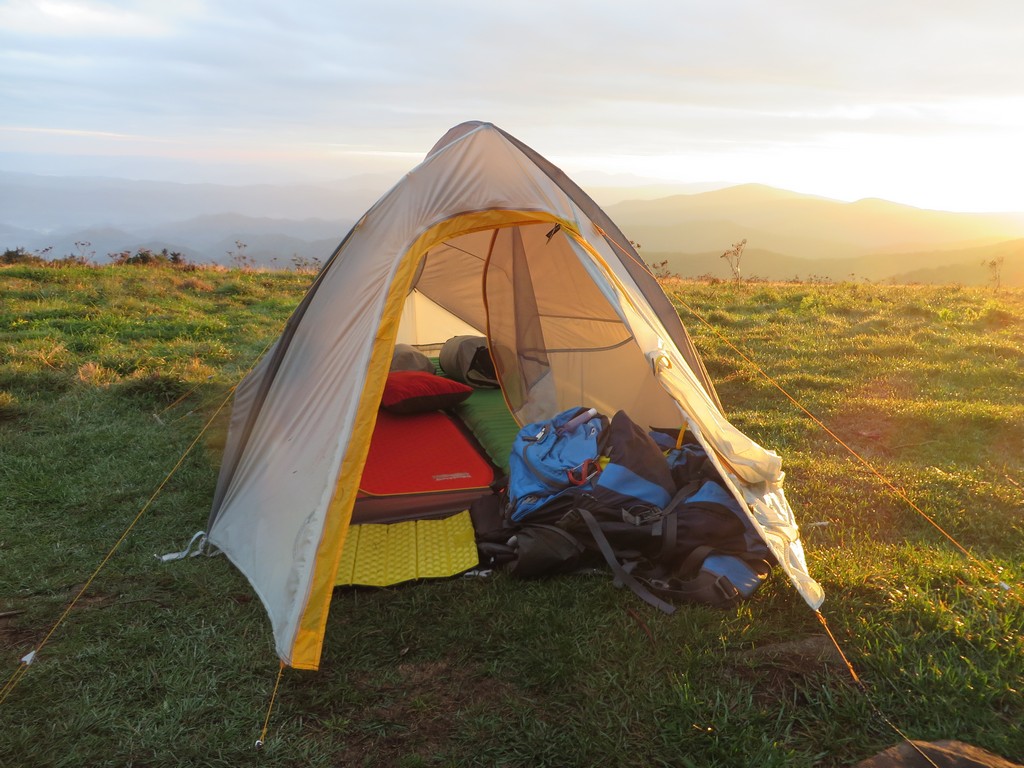There are a lot of good resources on youtube, especially from "thru-Hikers" in the USA, who have done 3 month stints on the Appalachian Trail or the PCT in the west which goes from the Mexican Border to the Canadian Border.
Some are called "triple crowners" as they done the AT, the PCT and the CDT which is quite rough and goes up the spine of the rockies towards Canada.
The guy above is a triple crowner, and has a good gear list. Not "utra-light" - the kind of guys who have a tarpaulin, and cut their toothbrush in half. But a gear list that can handle Alpine cold, winds.
Hence the 2 man tent (a light one) which is designed to stand up to high winds, and also a good jetboil sol cooker
He has decided to take a thermarest neoair (the rolls royce of self-inflating mats) , as this gives excellent insulation from the ground , even on snow. And is very comfortable.
One could also use, as i do , a Zrest foam mattress, which is basically a better more comfy foam mat.
Its a lot cheaper, and you can use it to have a snooze on sharp rocks in the middle of the day .
some take both, or have a cut down version of the zrest for their butt when lunching.
Z rest Mattress
Above: big agnes copper spur and the MSR Hubba Hubba, both very roomy and good in winds.
Copper spur:
trail weight 1.53 kg
Good for 3 seasons, and high winds on mountains at a pinch:
http://loomisadventures.com/gear/big-agnes-copper-spur-ul2-tent-review
The inaugural trip for our Copper Spur UL2 was a rough one, but is passed with flying colors. We used it on Mount Adams at about 8,600 feet in elevation in 30 to 40 mile per hour winds. Setup in the windy conditions was not as bad as I had anticipated.
One thing to note is the Copper Spur UL2 is not a quiet tent in the wind. The lightweight fabric creaks and moans as it is bombarded by gusting wind. It's not to the point of being too loud to sleep, but it is audible. the Copper Spur is a 3 season tent and the conditions we had on Mount Adams were more akin to using a 4 season or mountaineering tent. Through the night we had snow/sleet/hail/rain, but the Copper Spur stood it's ground and kept us cozy and dry inside. The temperature dipped below freezing, but we did not have any condensation issues.
another very popular tent, which is lighter and still has good space inside - the Big Agnes Fly Creek UL (utralight). saw a lot of these in NZ.
weight: 1.07 KG


https://www.outdoorgearlab.com/reviews/camping-and-hiking/backpacking-tent/big-agnes-fly-creek-hv-ul2
The Fly Creek HV UL2 tent is Big Agnes's attempt at making this classically lightweight and tight-on-space tent roomier. It is a lightweight performance double-wall tent that is still the lightest tent in this review, weighing a scant 37.4 ounces including stakes. It performs well in a wide variety of conditions, but its weak point is that high cross winds can collapse its single ridge pole.
If you do a lot of camping on hilltops or ridges, the copper spur is a better choice.
All of these tents are available at:
https://www.wildearth.com.au
Note about gas cookers:
There is a big advantage in having a all in one cooker set with a screw on cylinder pot...
compared to a basic gas cooker , it does not need much of a windshield, it saves fuel because much less heat gets lost tp wind (hence saves weight there). And as much cooking is done in the tent (not windy, not rainy ) with the fly partly open for aeration (v important), it is way less unstable and dangerous than a basic stove with a pot balanced on it.
I use a MSR plastic plate, or sometimes a thin wooden board to cook on, to avoid tipping , which would be disastrous in a tent. The advantage of a board is also that once you poor the hot water out, you can place the cylinder pot on the board (and not burn your tent floor).
Myself I use the MSR windburner (best bought in the USA, as it is 330$ in aus... about 200AU $ in the USA) . I have used the "jetboil flash" in the USA - and got quite frustraqted with the boil times. I realised this was because of altitude ... many Parks such as Yellowstone and Bryce, yoy find yourself at 2000m or so altitude... and the basic jetboil does not have a valve that compensates for altitude or cold. Because there is less oxygen and pressure, a good cooker opens the valve to compensate.
The windburner is amazing in that it has a huge surface area cooker, is hardly affected by wind (less than jetboil) and has a pressure compensator. This also means you get the same top power on the last few grams of gas (compared to others which basically cannot function on very low gas). This saves money and means less fuel to carry.
I do believe the latest jetboils have pressure compensators.
Above: jetboil Sol
Above: MSR Windburner


